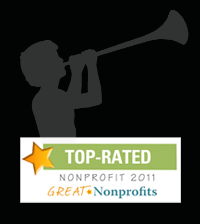
| CREATIVE ARTS THERAPY |
Why
Creative Arts Therapy For Abused Children? In calendar year 2000, more than 3 million cases were reported to Child Protective Services agencies concerning the welfare of 5 million children. After investigation, approximately 879,000 children were confirmed to be serious victims of child maltreatment. Child abuse reports have maintained a steady growth for the past fifteen years with the total number of reports nationwide increasing over 45% since 1987. (Sources: USDH&HS; NCPCA; OCCAPC; TDPRS; NCCAN; USABCA&N). According to the most recent national data compiled, as of July 2002, over 13,700 children are abused or neglected each day and four children die each day because of child abuse by a parent or caretaker. More than 18,000 children are permanently disabled every year. More than 565,000 children are seriously injured every year. And, it is now estimated that there are more than 60 million survivors of childhood sexual abuse in America today. These startling statistics are frightening. (Sources: See Above) Child abuse and neglect cause physical and/or emotional harm to children. They can produce short-term psychological consequences that range from poor peer relations to violent behavior, as well as untold long-term psychological and economic consequences when children reach adulthood. Abuse and neglect can result in serious injury or, in extreme cases, death. Long term effects of child abuse include fear, mistrust, anxiety, depression, anger, hostility, hatred, ambivalence, betrayal, inappropriate sexual behavior, poor self esteem, tendency toward substance abuse, difficulty with close relationships, guilt and a higher risk of developing mental health disorders. Immediate intervention and cessation of the abuse is clearly essential. Once the child has been removed from the abuse situation, the child must have effective therapeutic treatment. The primary goals of therapy for abused children are to address their feelings about themselves, address what has happened to them and address their future relationships. Both individual and group therapeutic approaches are proven most effective in conjunction with creative arts therapy. Creative
Arts Therapy: It’s Roots Creative Arts Therapy: Defined |

